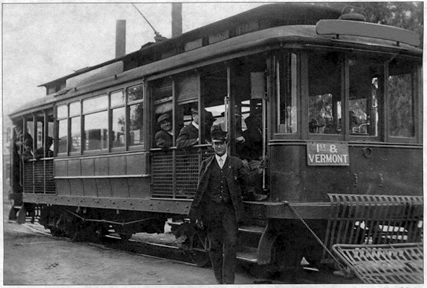Jimmy Starr began his career in Hollywood in the 1920s, writing the intertitles for silent shorts for producers such as Mack Sennett, the Christie Film Company, and Educational Films Corporation, among others. He also toiled as a gossip and film columnist for the Los Angeles Record in the 1920s and from 1930-1962 for the L.A. Herald-Express.
Starr was also a published author. In the 1940s, he penned a trio of mystery novels, the best known of which, The Corpse Came C.O.D., was made into a movie.
In 1926, Starr authored 365 Nights in Hollywood, a collection of short stories about Hollywood. It was published in a limited edition of 1000, each one signed and numbered by the author, by the David Graham Fischer Corporation, which seems to have been a very small (possibly even a vanity) press.
Here’s “Bunk Boulevard” from that 1926 collection.
BUNK BOULEVARD
Hollywood Boulevard. . . .
Late afternoon. Women shoppers with tiny beads of perspiration on once powdered noses. Magazines used as fans. Coatless men. Heat waves make a pale blue haze come from the black asphalt. Car tracks glisten in the sun.
Cahuenga Avenue and Hollywood Boulevard . . .
The Forty-second and Broadway of the movie village. A thin man, coatless,but with open vest, smelling of sweat, shouts from across the street:
“Joe, didja’ get me that gang for th’ night shot?”
“Yeh,” comes the hasty answer from someone in the movie crowd.
The thin man scuffs from sight around the corner.
The sun is tired. As it sinks a shadow remains. Shop owners crank up their awnings.
Seven giddy schoolgirls with books and papers make a sudden loud entrance into the drug store. There is a rush for the cosmetic and soda counter. Some believe in interior decorating first.
Four tall glasses with syrup concoctions slide along the marble counter.
One with pimples on her forehead sucks hard on the chocolate in the bottom of the glass.
A rosy-cheeked youth enters in striped flannels.
Five pairs of sparkling eyes greet him.
His cheeks become redder and his chest swells a bit—and probably his head. He has no hat for a test.
There are muffled giggles, and the girl with the prominent teeth lisps something.
A fat lady with a rabbit neck-piece fanning herself with a theatre program has difficulty in getting on the high soda stool.
More giggles.
The youth pays the cashier for a stick of pink make-up.
A man with checkered pants and gaudy shirt calls for a “cherry-coke.”
There is almost a cool breeze outside.
A flivver truck with steaming radiator skids around the corner. The driver dumps out stacks of green evening papers.
Instantly familiar newsboy shouts pierce the hot silence.
A long, heavy under-slung street car rumbles to the corner and stops, discharging groups of high school students.
The screaming brakes on a taxi cab, the sound of sliding rubber on warm pavement, a tiny girlish squeak, a muffled scream of the fat lady and he hoarse cry of the crippled newsboy.
A crowd collects from nowhere. Girls shut their eyes—afraid to look.


